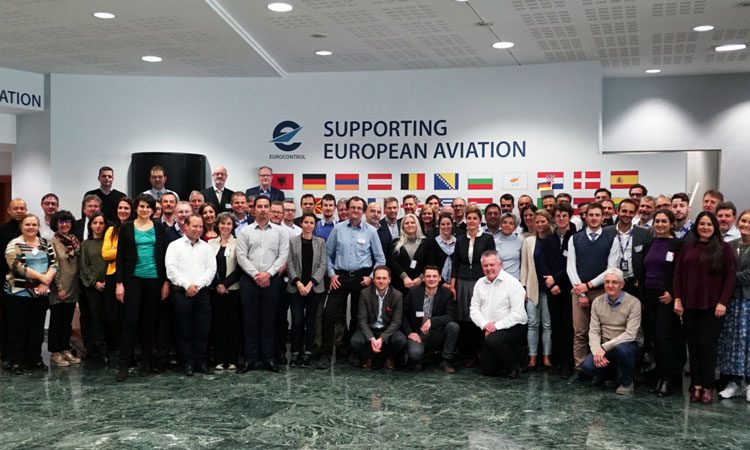EUROCONTROL says A-CDM is norm for airport local collaboration
- Like
- Digg
- Del
- Tumblr
- VKontakte
- Buffer
- Love This
- Odnoklassniki
- Meneame
- Blogger
- Amazon
- Yahoo Mail
- Gmail
- AOL
- Newsvine
- HackerNews
- Evernote
- MySpace
- Mail.ru
- Viadeo
- Line
- Comments
- Yummly
- SMS
- Viber
- Telegram
- Subscribe
- Skype
- Facebook Messenger
- Kakao
- LiveJournal
- Yammer
- Edgar
- Fintel
- Mix
- Instapaper
- Copy Link
Posted: 7 May 2019 | International Airport Review | No comments yet
EUROCONTROL has seen a rise in the use of A-CDM for enhanced network predictability and reduction of delays, both at the airport and en-route.


The attendees of the first ever A-CDM CHWG meeting at EUROCONTROL's Headquarters. ©EUROCONTROL
April saw the EUROCONTROL Network Manager (NM) launch the first A-CDM Coordination and Harmonisation Working Group (A-CDM CHWG), which met for the first time on the 11 April at EUROCONTROL’s Brussels HQ, bringing together representatives covering the whole spectrum of A-CDM stakeholders – air traffic control, airport operators, aircraft operators, ground handlers, slot coordinators and the EUROCONTROL Network Manager.
Collaborative decision-making helps NM by improving network predictability and reducing delays. The Group provides an exchange forum for the European A-CDM community to share experience and best practices regarding A-CDM implementation. With 32 airports represented and more than 80 members, this group is the biggest of its kind in Europe, drawing additionally on consolidated and coordinated inputs from the airline community via the participation of IATA’s Airline A-CDM Coordination Group (AACG).
Besides facilitating open discussions and promoting collaboration, the Group’s mission is to identify and agree where needed additional or refined harmonised procedures, processes and best practices to complement the existing ones, to be used by stakeholders in the implementation of A-CDM. Among the topics addressed were harmonising the start-up procedure, streamlining the A-CDM information airports share with NM, clarifying the relation between this information and the flight plan data, and developing a EUROCONTROL A-CDM Specification.
12 years since the first European airport adopted the A-CDM process, 28 airports within the European network managed by the EUROCONTROL NM are now drawing benefits from improved operational performance and resilience of operations. Dynamically sharing accurate and timely information with NM allows for enhanced network predictability and reduction of delays, both at the airport and en-route. Indeed, A-CDM is gradually becoming regarded as the norm for airport local collaboration. It sets the cornerstone for full integration of airports into the ATM Network, enabled by linking the Network Operations Plan (NOP) and Airport Operations Plan (AOP). A-CDM processes have now reached a high level of maturity, with valuable experience being acquired from their adaptation to numerous operational contexts.
Lisbon Airport is the most recent member of the A-CDM family, becoming a fully implemented A-CDM airport on the 16 April, after successfully connecting to NM’s systems using NM’s B2B Web Services. This brings the percentage of departures from A-CDM airports situated in the network managed by the EUROCONTROL NM to 36.4 per cent. Warsaw and Dublin Airports are planned to become the next fully implemented A-CDM airports before the end of the year.
Related topics
Aeronautical revenue, Air traffic control/management (ATC/ATM), Airport Collaborative Decision Making (A-CDM), Capacity, Economy, Passenger volumes, Regulation and Legislation
Related airports
Dublin Airport (DUB), Lisbon Airport (LIS), Warsaw Chopin Airport (WAW)


















